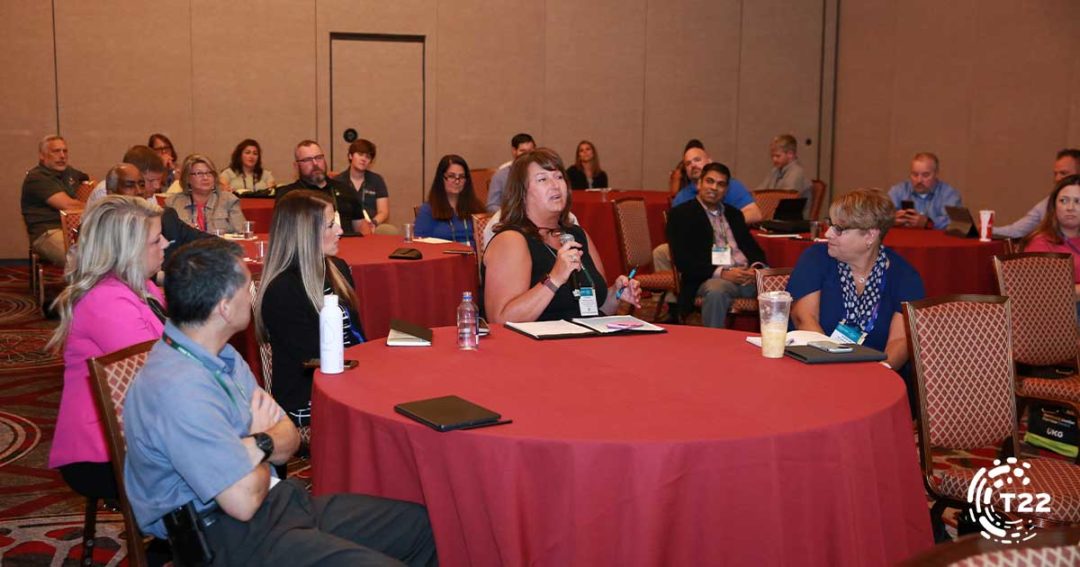
How technology improves experience
Employees, members, operations benefit from artificial intelligence, ITMs.
Listen to the article
There are always conversations about how credit unions can increase efficiency while improving member and employee experience.
“Generating more efficiency and removing friction in our member experiences. Those overall topics have been around forever,” says Wendy Cleveland, executive vice president and chief operations officer at $2.4 billion asset Sound Credit Union in Tacoma, Wash. “How they manifest changes, but the main goals remain unchanged.”
During Wednesday’s roundtable exchange at the 2022 CUNA Operations & Member Experience Council and CUNA Technology Council Conference in Las Vegas most of the conversation trended toward experience and how credit unions can improve operations and efficiency.
“There was a lot more emphasis on remote work and post-pandemic work than I thought there was going to be. I thought we had talked that out, but it seems like we haven’t,” says Jeffrey Staw, chief innovation officer at $5.8 billion asset Bellco Credit Union in Greenwood Village, Colo. “Are we talking about experience more than we used to? I think the answer’s yes. It’s a more defined term. More people use it in the right way, have better ideas, and have more fundamental thinking about it, so we can have better conversations. It’s a term everyone understands now.”
Many credit unions are still working with a decreased staff as a result of the coronavirus pandemic and a strong job market that has encouraged people to switch jobs.
Technology can help. One conference attendee explained how interactive teller machines (ITMs) have helped their credit union, which has 24 ITMs across six branches, open two new branches without hiring any additional staff. Artificial intelligence (AI) can also improve operations and the employee experience while answering members’ questions 24/7.
At one credit union, 43% of the calls from members have been related to checking balances. That credit union is implementing an AI bot to replace the front-end contact center.
“We’re trying to alleviate that so we can get our contact center focused on more challenging items instead of mundane tasks,” an employee of that credit union says. “Our contact center is excited. It also helps during the current workforce situation by covering some of the bases.”
AI technology has also improved in recent years, allowing for multiple language options and better recognition of human voices, accents, and prompts. A voice biometric fraud engine can also identify the member’s voice to protect against fraud.
Each call that’s solved by AI opens up time for a staff member to handle more in-depth problems or improve efficiency. That can enhance job satisfaction, which is crucial as credit unions work to attract employees and improve retention. Credit unions are also doing this by increasing salaries, allowing remote work, and making flexible changes to increase employee options.
“It’s made us up our game in many areas,” an attendee says. “We’re also trying to provide them different ways to grow within the organization. Promote from within and make employees feel like you’re investing in their growth.”
For well-run, efficient operations, that flexibility must come with checks and balances. That can come in the form of data loss protection software, no printing policies, clean desk policies, random checks where employees have to send pictures of their home office to human resources, or frequent output checks to ensure that remote workers remain exemplary employees.
